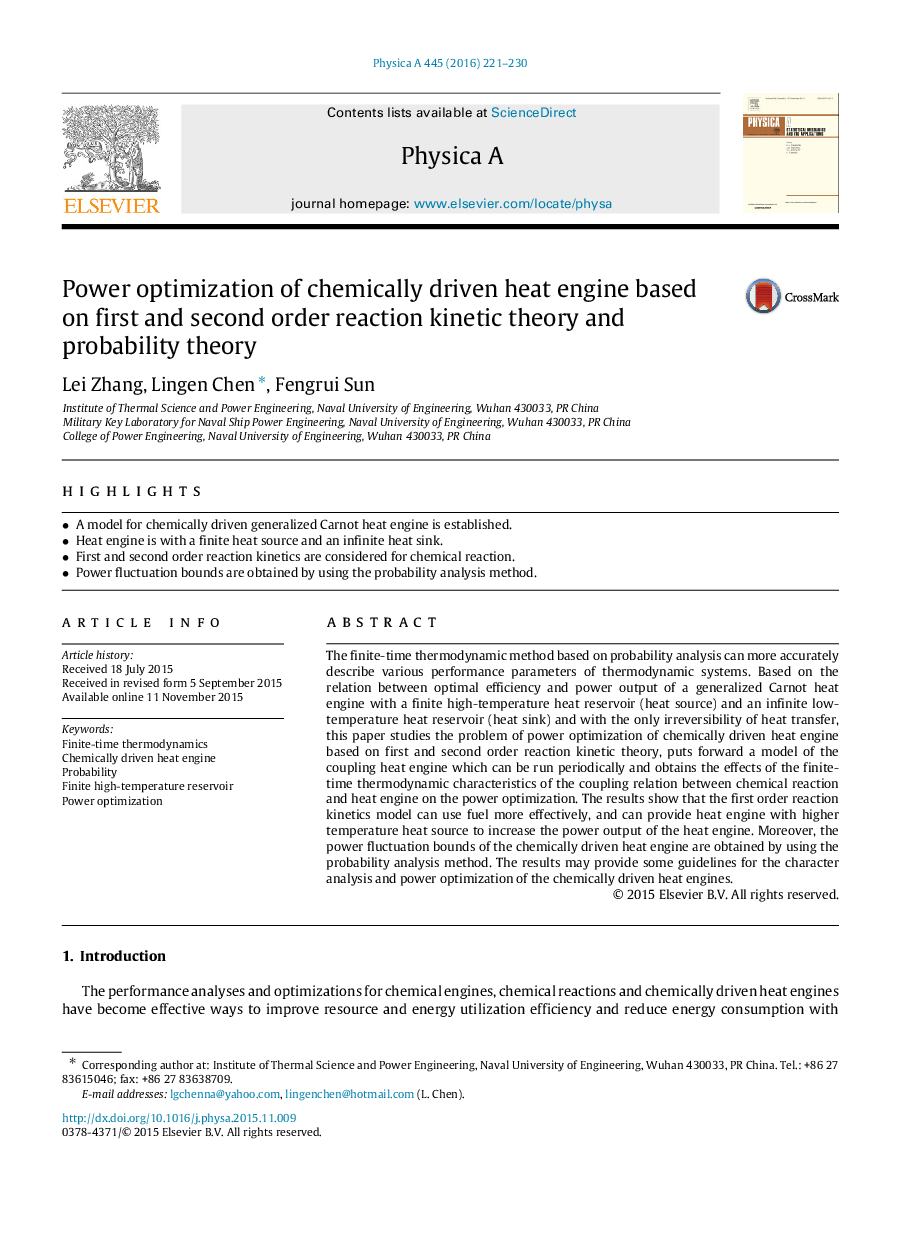| Article ID | Journal | Published Year | Pages | File Type |
|---|---|---|---|---|
| 7378435 | Physica A: Statistical Mechanics and its Applications | 2016 | 10 Pages |
Abstract
The finite-time thermodynamic method based on probability analysis can more accurately describe various performance parameters of thermodynamic systems. Based on the relation between optimal efficiency and power output of a generalized Carnot heat engine with a finite high-temperature heat reservoir (heat source) and an infinite low-temperature heat reservoir (heat sink) and with the only irreversibility of heat transfer, this paper studies the problem of power optimization of chemically driven heat engine based on first and second order reaction kinetic theory, puts forward a model of the coupling heat engine which can be run periodically and obtains the effects of the finite-time thermodynamic characteristics of the coupling relation between chemical reaction and heat engine on the power optimization. The results show that the first order reaction kinetics model can use fuel more effectively, and can provide heat engine with higher temperature heat source to increase the power output of the heat engine. Moreover, the power fluctuation bounds of the chemically driven heat engine are obtained by using the probability analysis method. The results may provide some guidelines for the character analysis and power optimization of the chemically driven heat engines.
Related Topics
Physical Sciences and Engineering
Mathematics
Mathematical Physics
Authors
Lei Zhang, Lingen Chen, Fengrui Sun,
